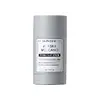What's inside
What's inside
 Key Ingredients
Key Ingredients

 Benefits
Benefits

 Concerns
Concerns

 Ingredients Side-by-side
Ingredients Side-by-side

Water
Skin ConditioningGlycerin
HumectantKaolin
AbrasiveCaprylic/Capric Triglyceride
Masking1,2-Hexanediol
Skin ConditioningPhaseolus Angularis Seed Powder
Hectorite
AbsorbentCetyl Alcohol
EmollientGlyceryl Stearate Se
EmulsifyingCetearyl Olivate
Sorbitan Olivate
EmulsifyingPhaseolus Angularis Seed Extract
AntioxidantUltramarines
Pyrus Communis Fruit Extract
Skin ConditioningEthylhexylglycerin
Skin ConditioningSodium Acrylate/Sodium Acryloyldimethyl Taurate Copolymer
Emulsion StabilisingHedera Helix Leaf/Stem Extract
AntimicrobialPolyisobutene
Fragaria Chiloensis Fruit Extract
Skin ConditioningPyrus Malus Leaf Extract
Skin ConditioningCI 77491
Cosmetic ColorantCaprylyl/Capryl Glucoside
CleansingSorbitan Oleate
EmulsifyingTriethoxycaprylylsilane
Water, Glycerin, Kaolin, Caprylic/Capric Triglyceride, 1,2-Hexanediol, Phaseolus Angularis Seed Powder, Hectorite, Cetyl Alcohol, Glyceryl Stearate Se, Cetearyl Olivate, Sorbitan Olivate, Phaseolus Angularis Seed Extract, Ultramarines, Pyrus Communis Fruit Extract, Ethylhexylglycerin, Sodium Acrylate/Sodium Acryloyldimethyl Taurate Copolymer, Hedera Helix Leaf/Stem Extract, Polyisobutene, Fragaria Chiloensis Fruit Extract, Pyrus Malus Leaf Extract, CI 77491, Caprylyl/Capryl Glucoside, Sorbitan Oleate, Triethoxycaprylylsilane
Water
Skin ConditioningKaolin
AbrasiveGlycerin
HumectantVolcanic Soil
Skin ConditioningManicouagan Clay
AbsorbentStearic Acid
CleansingGlycolic Acid
BufferingBifida Ferment Filtrate
Skin ConditioningSaccharomyces/Barley Seed Ferment Filtrate
HumectantSaccharomyces/Mother Of Pearl Ferment Lysate Filtrate
Skin ConditioningLactobacillus Ferment Lysate
Skin ConditioningLactobacillus/Soymilk Ferment Filtrate
Skin ConditioningCaprylic/Capric Triglyceride
MaskingCollagen
MoisturisingPentylene Glycol
Skin ConditioningSimmondsia Chinensis Seed Oil
EmollientSodium Hydroxide
BufferingCI 77499
Cosmetic ColorantDipropylene Glycol
HumectantGlyceryl Stearate
EmollientDipotassium Glycyrrhizate
HumectantBisabolol
MaskingCeteth-25
CleansingPhenoxyethanol
PreservativeMenthone Glycerin Acetal
RefreshingPEG-100 Stearate
Butylene Glycol
HumectantHectorite
AbsorbentPEG-8
HumectantXanthan Gum
EmulsifyingSorbitan Isostearate
EmulsifyingCitrus Reticulata Fruit Extract
Skin ProtectingPhytic Acid
Disodium Stearoyl Glutamate
CleansingAluminum Hydroxide
EmollientPaeonia Suffruticosa Extract
Skin ConditioningMichelia Alba Flower Extract
Skin ConditioningScutellaria Baicalensis Extract
AntimicrobialCI 77891
Cosmetic ColorantPolysorbate 20
EmulsifyingTitanium Dioxide
Cosmetic ColorantCeramide AP
Skin Conditioning1,2-Hexanediol
Skin ConditioningHydroxyacetophenone
AntioxidantLeuconostoc/Radish Root Ferment Filtrate
AntimicrobialParfum
MaskingPopulus Tremuloides Bark Extract
AntiseborrhoeicPropylene Glycol
HumectantEthylhexylglycerin
Skin ConditioningWater, Kaolin, Glycerin, Volcanic Soil, Manicouagan Clay, Stearic Acid, Glycolic Acid, Bifida Ferment Filtrate, Saccharomyces/Barley Seed Ferment Filtrate, Saccharomyces/Mother Of Pearl Ferment Lysate Filtrate, Lactobacillus Ferment Lysate, Lactobacillus/Soymilk Ferment Filtrate, Caprylic/Capric Triglyceride, Collagen, Pentylene Glycol, Simmondsia Chinensis Seed Oil, Sodium Hydroxide, CI 77499, Dipropylene Glycol, Glyceryl Stearate, Dipotassium Glycyrrhizate, Bisabolol, Ceteth-25, Phenoxyethanol, Menthone Glycerin Acetal, PEG-100 Stearate, Butylene Glycol, Hectorite, PEG-8, Xanthan Gum, Sorbitan Isostearate, Citrus Reticulata Fruit Extract, Phytic Acid, Disodium Stearoyl Glutamate, Aluminum Hydroxide, Paeonia Suffruticosa Extract, Michelia Alba Flower Extract, Scutellaria Baicalensis Extract, CI 77891, Polysorbate 20, Titanium Dioxide, Ceramide AP, 1,2-Hexanediol, Hydroxyacetophenone, Leuconostoc/Radish Root Ferment Filtrate, Parfum, Populus Tremuloides Bark Extract, Propylene Glycol, Ethylhexylglycerin
 Reviews
Reviews

Ingredients Explained
These ingredients are found in both products.
Ingredients higher up in an ingredient list are typically present in a larger amount.
1,2-Hexanediol is a synthetic liquid and another multi-functional powerhouse.
It is a:
- Humectant, drawing moisture into the skin
- Emollient, helping to soften skin
- Solvent, dispersing and stabilizing formulas
- Preservative booster, enhancing the antimicrobial activity of other preservatives
This ingredient is an emollient, solvent, and texture enhancer. It is considered a skin-softener by helping the skin prevent moisture loss.
It helps thicken a product's formula and makes it easier to spread by dissolving clumping compounds.
Caprylic Triglyceride is made by combining glycerin with coconut oil, forming a clear liquid.
While there is an assumption Caprylic Triglyceride can clog pores due to it being derived from coconut oil, there is no research supporting this.
Learn more about Caprylic/Capric TriglycerideEthylhexylglycerin (we can't pronounce this either) is commonly used as a preservative and skin softener. It is derived from glyceryl.
You might see Ethylhexylglycerin often paired with other preservatives such as phenoxyethanol. Ethylhexylglycerin has been found to increase the effectiveness of these other preservatives.
Glycerin is already naturally found in your skin. It helps moisturize and protect your skin.
A study from 2016 found glycerin to be more effective as a humectant than AHAs and hyaluronic acid.
As a humectant, it helps the skin stay hydrated by pulling moisture to your skin. The low molecular weight of glycerin allows it to pull moisture into the deeper layers of your skin.
Hydrated skin improves your skin barrier; Your skin barrier helps protect against irritants and bacteria.
Glycerin has also been found to have antimicrobial and antiviral properties. Due to these properties, glycerin is often used in wound and burn treatments.
In cosmetics, glycerin is usually derived from plants such as soybean or palm. However, it can also be sourced from animals, such as tallow or animal fat.
This ingredient is organic, colorless, odorless, and non-toxic.
Glycerin is the name for this ingredient in American English. British English uses Glycerol/Glycerine.
Learn more about GlycerinWe don't have a description for Hectorite yet.
Kaolin is a clay. It is used for oil control and to help minimize pores. Like other clays, kaolin has the ability to absorb excess sebum or oil. This can help clean out pores and mattify the skin.
Some types of kaolin may have exfoliating properties. When water is added to kaolin, it becomes a paste with small abrasive particles.
Most kaolin is a white color, but may be pink/orange/red depending on where it comes from.
The name 'kaolin' comes from a Chinese village named 'Gaoling'. Kaolin clay comes from rocks rich in kaolinite. Kaolinite, the mineral, has a silicate layered structure. Kaolinite is formed from chemical weathering of aluminum siilicate minerals.
Besides skincare, kaolin is commonly used to make glossy paper, in ceramics, toothpaste, and as medicine to soothe stomach issues.
Learn more about KaolinWater. It's the most common cosmetic ingredient of all. You'll usually see it at the top of ingredient lists, meaning that it makes up the largest part of the product.
So why is it so popular? Water most often acts as a solvent - this means that it helps dissolve other ingredients into the formulation.
You'll also recognize water as that liquid we all need to stay alive. If you see this, drink a glass of water. Stay hydrated!
Learn more about Water